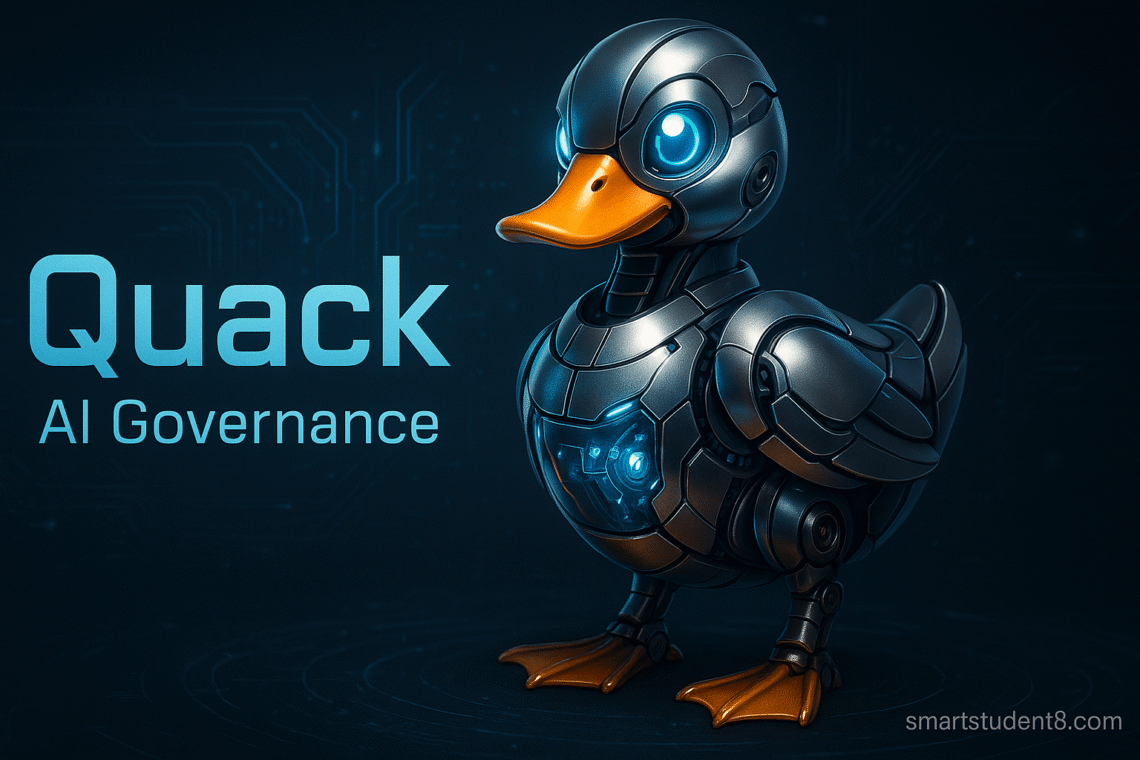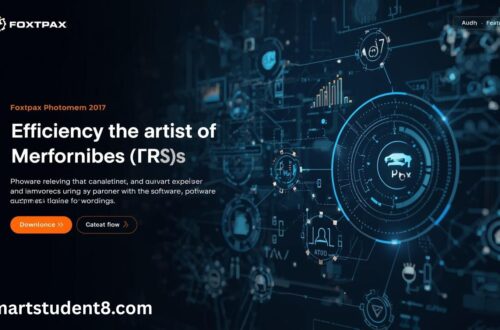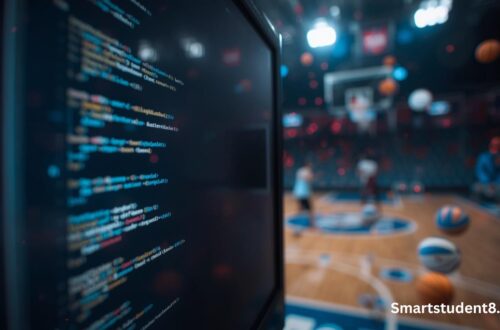Decentralized autonomous organizations, or DAOs, were intended to be the future for community-led initiatives. It was a simple but powerful idea: A group of token owners coming together without a central authority to make decisions in a transparent manner. Anyone who has been involved in a DAO will know that the reality can be messy. Every week I spent hours trying to stay on top of dozens and dozens complex proposals that were submitted for the DeFi project in which I had invested. This was a very exhausting experience. Voter turnout was low, important decisions were put off for several weeks, and it felt like the whole process was a chore rather than anything revolutionary. The widespread issue of voter fatigue, also known as gridlock in governance, has been a major bottleneck to the development of Web3.
Quack AI Governance has been created specifically to address this problem. Quack AI Governance introduces an intelligent layer to decentralized decision-making. It aims to turn DAO governance into an efficient, streamlined system by using AI autonomous agents. The technology does not just accelerate things; it also rethinks the way community decisions are taken, taking into account core issues such as fairness, efficiency, and participation. In order to achieve DAOs’ scaling goals, we are going beyond the simple voting on chain to a model that uses AI to provide analysis and automation.
The core problem with traditional DAO governance
Quack AI is a revolutionary solution to DAO governance. To understand what Quack AI can do, it’s important first to grasp why DAO governance has often failed to deliver on its promises. It sounds democratic to say “one token equals one vote”, but this creates a number of systemic problems as the DAO grows. Voter apathy is the first big hurdle. The majority of token holders do not have full-time expertise in governance, but are rather passive investors. The lack of time, knowledge, and motivation prevents them from thoroughly researching every proposal. This can include anything from simple protocol updates to major treasury changes. Even DAOs that have millions in their treasury can’t get 10% of members to vote. The low level of participation can paralyze the organization and make it difficult to adjust to changes in the market or to fund new initiatives.
Second, and more serious, is the threat of plutocracy. Wealthy token holders (also known as whales) will dominate decision-making. The voting power of token holders is linked to their number, so a few large holders could easily force through proposals which benefited them even though it was detrimental to the community. Decentralization is undermined by this concentration of power. One example I remember is when a whale within a gaming DAO blocked an entirely community-supported proposal to implement a new rewards system because it did not align with his personal financial strategy. These challenges–sluggishness, low engagement, and unfair influence–create a significant barrier to the long-term viability and success of many Web3 projects. Quack AI Governance is designed to address these problems head-on.
Quack AI Governance: What Is It?
Quack AI governance is a protocol which integrates artificial intelligent directly into DAOs or other decentralized systems. This is not just another voting system; this comprehensive governance layer automates all aspects of the process from proposal assessment and risk evaluation to execution on chain. To handle governance, the system uses specialized AI Agents–autonomous software designed to do specific tasks. They can analyze documents and monitor sentiment on platforms such as Discord or Telegram. These agents also evaluate the potential risk in code and execute final decisions via smart contracts.
Imagine hiring a team of unbiased, tireless analysts to work 24/7 for your DAO. Quack AI gives members the insights they need to make an informed decision, rather than forcing them to be experts in smart contracts or treasury. Quack AI’s platform aims to improve governance by making it more efficient and accessible. The platform creates an environment where data-driven decisions and rules are used to make decisions, which reduces human error or emotional bias. This allows the DAO to work at the speed and pace of the market rather than the human decision-making process.
We will now explore the mechanism at its core that allows this to happen.
AI Delegation Model – Solving voter apathy
The AI Delegation Model is at the core of Quack AI’s solution. This feature is a direct response to the problem of low voter engagement. The platform does not require token holders to vote for every proposal. Instead, they can delegate voting authority to an AI agent who aligns their preferences with their strategic goals. It’s like creating rules for an automatic investment manager. But for governance. A user could configure the agent so that it always votes in favour of proposals which increase security. They might also prioritize long-term sustainability and short-term gain, or allot a percentage of their treasury for community grants.
After a user has set their preferences, an AI agent will take over and analyze incoming proposals, casting their votes for them, even if they are not online. The user can be heard in all decisions without having to participate actively. The system does not just increase participation; it also makes that participation more meaningful. Quack AI also introduces the concept of Governance Certificates. These certificates can be earned by users who actively engage with the platform. They will then receive additional voting rights that are separate from tokens. It helps to democratize power by giving community members who are dedicated a voice.
Next, we will examine how AI analyses proposals prior to a vote being cast.
Intelligent Proposal Analyses and Automated Execution
Quack AI governance’s ability to conduct intelligent analyses on proposals prior to the voting phase is one of its most powerful features. Proposal Engine, a platform component, acts as an advanced gatekeeper by using AI to evaluate draft proposals for their viability, risks, and alignment with DAO objectives. The AI component is able to read, understand and analyze technical documents. It can also check smart contracts for security vulnerabilities and assess community sentiment. The AI component then simplifies all of this information, including a summary with an easy-to-understand risk score, into a concise, simple and straightforward report.
Both human voters as well as AI agents delegated by the AI are able to benefit from this AI-driven support. This ensures everyone is given the same, high-quality information. It also levels the playing field by preventing false or misleading information from being used to influence votes. The automated governance system takes control of the execution once a decision has been made. Quack AI’s efficiency is best demonstrated here. The system is able to execute approved actions automatically through smart contracts, instead of using a wallet with multiple signatures where keyholders must approve each transaction manually. It could be releasing money from the Treasury, awarding rewards, updating protocol parameters or managing ownership. The end-to-end automated process reduces execution delays by a great deal and removes any risk of error.
Let’s now look at some of the applications that this technology can have in real life.
Quack AI governance: Real World Use Cases
Quack AI’s modular structure allows for its adoption in many different sectors of the Web3 ecosystem. The plug-and-play nature of Quack AI allows developers to integrate certain features, like automated Treasury Management or risk analysis, without having to overhaul their governance structure. Its flexibility is a key feature for many high-value applications.
Quack AI has made a major impact in a number of key areas:
- Protocol Optimization for Decentralized Finance: Platforms that operate within a volatile marketplace are optimized to maximize speed. Quack AI automates the management of treasuries and liquidity pools in order to respond to real-time market risk. AI agents could, for example, be programmed in order to automatically adjust the lending rate or rebalance the portfolio of a protocol based on current market conditions. These tasks would take too long and be difficult to handle manually.
- Real World Asset Integration (RWA). Tokenization of Real World Assets like Real Estate, Commodities, and Private Equity is an ever-growing market. It requires a level of legal enforcement, compliance and accountability that is difficult for traditional DAOs to deliver. Quack AI fills in this gap through the integration of legal agreements, audit trails and other information directly onto-chain. It creates an auditable, transparent and verifiable governance framework which meets the strict requirements of traditional finance. This makes RWA integration more reliable and scalable.
- Coordination across Chains: Web3’s future is multi-chain, with communities and projects spread out over multiple blockchains such as Ethereum and Solana. It is logistically impossible to manage governance in these different ecosystems. Quack AI’s multi-chain Governance layer allows DAOs to coordinate seamlessly between different networks. A DAO focused on the environment could, for example, use AI-mediated votes to ensure that its climate policies are implemented consistently across the protocol on different chains. All from one interface.
We will now discuss the trust that Quack AI’s automated system builds.
Verifiable on-chain transactions: a way to ensure trust and transparency
The “black box problem” is a major issue with AI systems. If you cannot see the AI’s decision-making process, then how can you believe it? Quack AI tackles this issue fundamentally by taking advantage of the transparent and immutable nature of blockchain. This protocol was designed not only to be transparent, but also explainable and verifiable. On-chain records every recommendation, analysis and decision made by AI agents, creating an audit trail that is permanent and tamper-proof. Anyone can review and compare the reasoning for a particular outcome. This includes the analysis of the data by the AI agent through its logic.
The protocol includes cryptographic proofs as well as anomaly detectors to increase security and trust further. The features are a check and balance system, where specialized agents review decisions prior to execution in order to make sure they comply with DAO rules and ethics. The multi-layered model of security provides an effective defence against AI errors or manipulation. This on-chain auditability is becoming increasingly important as regulators and institutions show an increasing interest in digital assets. This feature provides verifiable evidence needed to prove compliance, defences and accountability. It builds the behaviour necessary for wide adoption.
The table below compares the old and new models.
Traditional DAO Governance vs. Traditional DAO Governance
| Features | The Traditional Governance of DAO | Quack AI Governance |
|---|---|---|
| Speed of Decision | Slow, prone to gridlock and often takes weeks. | Fast with automated execution and real-time analyses. |
| Voter Participation | Low voter turnout (10%). | The AI delegator model ensures continuous participation. |
| Fairness | Whale dominance, plutocracy and high risk are all possible. | Reduced risk thanks to data-driven decision-making and preference-based delegating. |
| Mechanism | Users are required to vote and research each proposal in the manual. | Automation, using AI agents to handle analysis and vote based on the user’s preferences. |
| Execution | Handwritten, manual processes are often slow and require multiple signatures. | Execution of smart contracts across chains is fully automated. |
| Transparency | Limitations to voting records on the chain | Verifiability on the chain of all AI decisions. |
We can now look to the future with these differences in our minds.
Decentralized decision-making: The future of decentralized decision-making
Quack AI Governance is more than an incremental upgrade; it represents a fundamental change in the way decentralized organizations work. It unlocks DAOs’ potential to function and scale with modern technology firms by shifting governance burdens from humans to automated intelligent processes. As the system focuses on user-friendly delegating, multi-chain compatibility and verifiable explanationability, it is helping to usher in a new age of Web3 governance. Reflecting on the slow, clunky DAOs I’ve used in the past, this AI-driven platform is exactly what I believe the industry requires to progress.
In the future, AI governance protocols such as Quack AI will become a standard for serious Web3 projects. The ability to handle complex operations, react instantly to changes in the market, and make fair, transparent decisions will be a key competitive advantage. It is not a question of whether AI can change the way we govern, but rather how fast we adapt. This technology will allow DAOs to finally overcome their operational bottlenecks and concentrate on the things that matter: creating innovative products and fostering a vibrant community. In the future, you will be able to delegate governance authority to an AI agent and check on a dashboard. You can then have the confidence that the decisions made are intelligent, instant, and for the benefit of everyone.
Read More: What is Spicy AI? Why are people talking about it?
Conclusion
In summary, Quack AI Governance is much more than a technology upgrade. It’s an innovative step towards truly democratic, transparent, and efficient decision-making within decentralised organizations. This approach addresses traditional DAOs’ most persistent problems by combining data-driven insight, automation and fairness. Quack AI governance is a solution that will become essential as the Web3 landscape evolves. Decentralised decision-making is brighter and smarter than ever.





